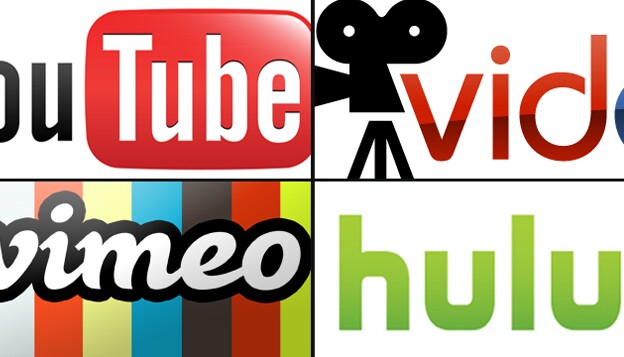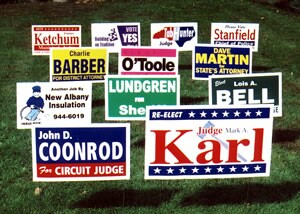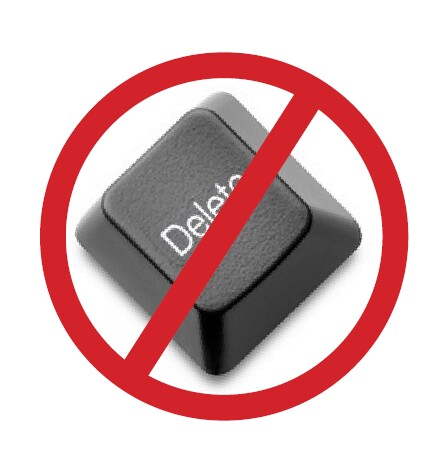 I saw a video over the holidays and it got the better of me so much so that I have to say something because these types of videos just need to stop being created by “marketers.”
I saw a video over the holidays and it got the better of me so much so that I have to say something because these types of videos just need to stop being created by “marketers.”
I’m talking about poorly conceived and produced online videos that we find on countless company websites and social media channels which are completely ineffectual. You know the kind of video I’m talking about: it starts off looking like it was homemade and it never gets better; the on-camera ‘talent’ has none; it doesn’t know when to end; there’s an information overload going on which leads to boredom; no clear understanding of who the audience is; and most importantly, the “WOW factor” is completely hidden or missing.
Unfortunately, this is exactly what some companies have haphazardly slapped together in the name of “meaningful content video.”
As we all know, online video content has just exploded over the past couple of years and it’s going to keep getting bigger in the foreseeable future. For example, did you know….
Yet we still have too many companies that create and post videos which are visual train-wrecks that unfortunately their customers and prospective customers will see. With that in mind, and so that the next video you develop has a chance to be all that it can be, let’s talk about what good videos have in common:
So whether you’re creating a testimonial, promotional, “how-to” or other type of video, the idea is to make sure that people find it interesting, worth spending the time to watch and that it leads to the desired next step. Repeated viewings of your video generally indicates a positive overall experience. Repeatedly having your video, or future videos, being ignored means, well, you know what that means.
“Be interesting, be enthusiastic…and don’t talk too much.” – Norman Vincent Peale
 Like you, I’ve given companies, associations, causes, etc., permission to send me information on topics, product information and promotional offers. I knew going into this that some of these companies would be smart enough to know how to market online to their permission-based group and others wouldn’t have a clue. And I’ve been right on both counts.
Like you, I’ve given companies, associations, causes, etc., permission to send me information on topics, product information and promotional offers. I knew going into this that some of these companies would be smart enough to know how to market online to their permission-based group and others wouldn’t have a clue. And I’ve been right on both counts.
Permission-based marketing is now at the heart of relationships between companies and their customers and prospects. People opt-in to receive your emails, “Like” your company on Facebook, subscribe to your website’s RSS feed or your You Tube channel, or follow you on Twitter or LinkedIn. But having permission to market to someone isn’t a license to bombard them with marketing messages.
In fact, not knowing when to “zip it” is a classic marketing mistake that too many marketing people make. If marketing is about building relationships with customers, over-marketing is the best way to kill the relationship and send the customer or prospect heading for the door. Just recently, yesterday to be exact, I came across a really interesting study entitled “The Social Breakup” prepared by ExactTarget, a company that provides clear evidence of what happens to customer relationships when the marketer comes on too strong:
Guess the biggest reason people break up with companies? (Drum roll)…Too much marketing. The study showed that:
On that note, let me tell you a quick story about an industry association I did some freelance consulting for. Within their business specialty, they were the largest association in the country but people were increasingly not renewing their membership. After talking to the marketing department and executive management, two recommendations were made: 1) Cut in third the number of emails and direct mail pieces that were being sent out; 2) Find out why people were not renewing. Well, they didn’t like the first recommendation but did ‘humor’ me by taking my advice about doing the research. When the member survey report was finalized it said that the #1 reason for members not renewing was a direct result of their being really bothered by the sheer number of emails they were receiving. Guess what the association did? They disregarded the research and went back to doing what they were doing…no lie!
So, how do you know when you’re over-marketing and about to kill a customer or prospective relationship? It can be a fine line, but here are some principles to guide your marketing planning to avoid this costly error.
At the end of the day, people opt in because they want to hear from you. But if you disrespect the relationship by coming on too strong, customers and prospects will flee. Treating your customers and prospects well is common courtesy; treating their permission to market to them as a gift is even better…it’s a smart marketing strategy. Have a wonderful holiday season.
 I’m so glad it’s over. Probably like you, my home phone was being called at an increasing rate the closer that we got to Election Day. Candidate faces and names were everywhere and on everything from direct mail to lawn signs, outdoor boards to TV and radio commercials. As annoying as it was, there were a number of messaging strategies and tactics that caught my attention because they were executed exceedingly well, which we as marketers should consider adding to our communication toolkits for use tomorrow, next week or next month. For as we all know, your customer and prospects are still being bombarded with marketing messages each and every day by both you and your competitors.
I’m so glad it’s over. Probably like you, my home phone was being called at an increasing rate the closer that we got to Election Day. Candidate faces and names were everywhere and on everything from direct mail to lawn signs, outdoor boards to TV and radio commercials. As annoying as it was, there were a number of messaging strategies and tactics that caught my attention because they were executed exceedingly well, which we as marketers should consider adding to our communication toolkits for use tomorrow, next week or next month. For as we all know, your customer and prospects are still being bombarded with marketing messages each and every day by both you and your competitors.
So let me share with you some strategies and tactics used by politicians leading up to November 6th that are worth remembering.
1) Understand the takeaway
Truth is, these folks do have some things to teach us marketers, particularly regarding messaging. They see the world a bit differently than we do, and use techniques most people didn’t learn in school or on the job, such as: It’s Not What You Say, It’s What People Hear. You can have the best message in the world, but the person on the receiving end will always understand it through the prism of his or her own emotions, preconceptions, prejudices, and existing beliefs. We focus too much of our energy on finding the best way to sell our message, and too little on understanding the filters consumers have as we deliver it. Political marketers care more about takeaways than inputs.
2) Make it look good
Have you seen the biographic videos produced by the two Presidential candidates? They were extraordinarily well done. A number of other political ads were also well done from a storytelling and video perspective. They stayed on message knowing the one critical point (not 4 or 5 points) that they want to make sure was communicated. The videos were shot and narrated well. They didn’t hire amateurs to do their work but had expert writers and producers creating the content. Like with your business, there’s too much at stake to do cheap stuff because everyone knows what cheap means. People interpret what your company/brands stands for based on the quality of creative and the media channel it’s presented on. Don’t go out until you look good.
3) Be the genuine article
Business marketing sometimes seems to stretch the truth a bit too much. When marketing messages are sufficiently public and sufficiently wrong, the press will get wind and call you on the truth of your marketing. Transparency of your brand could never be more important. It is less about giving the appearance of perfection and more about being genuine and human as we build relationships. While it’s critically important to tell your story and the benefits of your product or service, it’s not fine to lie about them. My mom use to tell me “Lies have short legs.” Meaning, you can’t outrun the truth …so don’t stretch it very far.
4) You are who you say you are
In the world of politics, I would argue that there’s nothing as important as branding and having people recognize what the brand stands for. Brand consistency is always maintained. Unlike politicians, too many companies struggle with this, swinging wildly from one branding concept to another. Everything from the taglines, to the logos, to the visuals has been choreographed beautifully. Get your branding figured out right now. Here are a few questions to ask yourself to determine if your branding is clear:
5) Be social..not antisocial
Politicians don’t just post stuff to their respective Twitter or Facebook accounts and hope people will read it. Rather, they actually engage with their social media audience. They post images and video. They have their immediate families and supporters use social media regularly. How is your company using social media to spread the good word about your company? I’ll be the first to say that spending a lot of time, money and resources on social media is not right for every company, maybe even yours, but without some presence, you’re letting the competition become more visible and be seen as a legitimate business partner at your expense.
6) Telling the story again and again
Why are some political ads annoying? Some of it is the content, but I think most of the annoyance is the quantity of political advertising as elections draw near. But politicians know one thing: without a communications budget that allows you to be out in the market in a way that shows you’re “a player”, you won’t get the job done. Far too many companies who do ‘invisible marketing’ base their companies short and long term success on thinking that customers will pick them over a brand that’s actively marketing and better known. The takeaway is that repetition is key …but too much repetition annoys.
As I said earlier, I’m glad the madness of the political advertising season is over but I’m grateful to have learned a few things because each and every day customers and prospects are voting who they want to do business with. Let the winner be you.
 A friend and I were watching a football game on TV when a commercial came on for a paint retailer. At the end of the commercial, my friend said “I don’t trust them for a minute. They don’t look or sound the part at all.” I started thinking about why some companies are trusted and others aren’t. And so I’ll pose the question to you: in today’s marketplace, with people not wanting to be sold to but rather base their purchase decision on many other factors, is your company better off just selling products and services or selling trust along with your products?
A friend and I were watching a football game on TV when a commercial came on for a paint retailer. At the end of the commercial, my friend said “I don’t trust them for a minute. They don’t look or sound the part at all.” I started thinking about why some companies are trusted and others aren’t. And so I’ll pose the question to you: in today’s marketplace, with people not wanting to be sold to but rather base their purchase decision on many other factors, is your company better off just selling products and services or selling trust along with your products?
One of the greatest demonstrations of selling trust came about years ago when Chrysler Corporation was being dragged back from the brink of extinction by its then CEO, Lee Iacocca. Chrysler was seen as having a flawed product and not to be trusted to build a good car. Lesser men would have resorted to selling at the cheapest price with giant discounts and 0% interest. They would have also gone down with the ship by making futile arguments about the features/benefits of the cars. Iacocca rejected this thinking and instead sold his personal guarantee…his promise…by saying “If you can find a better car, buy it.”
So then, what are the few key factors that will make your business such a trusted and relied-on presence in your customers’ lives that they will stay with you – and spend with you – for many, many years?
As I write this, virtually every advertiser, marketer and seller struggles in an un-trusting world. The public has very, very, scorched fingers and badly-bruised confidence. The temptation to overcome this mistrust with stronger product pitches, cheaper prices or deeply discounted fees – did I mention, cheaper prices – is enormous. And dangerous. To do so worsens the fundamental problem of low trust and deprives you of the finances needed to effectively market at all.
Unfortunately, and we all see it in our personal and business lives, there are bunches of companies out there who are “hit and runners.” They’re more in the business of getting customers to make sales rather than making sales to get customers. The first provides only income. The second provides income and equity. It’s sort of like the difference between dating and a long-term marriage. It’s about being there and having the other person’s back. That the other knows you care about them. That you find ways to stay interesting and relevant over the years. Sad but true, most marketers don’t really think about a long-term marriage with customers. They take it for granted or give it no importance. They’re focused on income not equity. Like you, I buy things from stores or service providers where not even a feeble attempt at creating an ongoing relationship is made. I think the thinking is “We did OK, he’ll be back.” Well, maybe and then again maybe not.
So, what can companies do from a marketing standpoint to start the process of building trust within the minds of their current and prospective customers? Here are eight thought-starters:
So, while we as marketers understand that we’re in the business of helping drive revenue for the company among other challenges, let’s not lose track of the fact that it’s always easier to derive sales from an existing customer versus that of a new customer. And that only happens if they trust you. And they’ll only trust you if you look and act the part. Don’t have your company be a “poser”…you’ll be found out!
by Rolf Gutknecht, Agent of Change (c) 2012
A friend of mine sent me a video by email last week that, as a marketer, I loved. It was one of those ‘old school’ videos featuring “America’s best salesman”…Elmer Wheeler, who’s message is as relevant and meaningful today as it was when he delivered in the 60’s. After watching it a number of times, and because of the subject matter, it made me think of an interesting way to look at what the brand experience is all about.
[youtube=http://www.youtube.com/watch?v=UW6HmQ1QVMw]
So here goes:
Imagine that you and your significant other decide to go to a well-known, fancy-schmancy steakhouse for a special night out dinner. Have that in your mind? Good. Now, picture another steakhouse of similar reputation. Both of the steakhouses prepare the same quality of steak but with one difference….. whereas the first restaurant makes a steak the way it’s supposed to be made (a thick clean cut, placed on the center of the plate) and presented with some tasty vegetables nicely positioned on the side and professionally put on the table, the second restaurant has a similar plate presentation but with no steak on it. Their steak gets delivered just a minute later on a hot stone tablet to your table…simmering and sizzling. The waitress presents the steak with elegance, and sprinkles some salt and pepper on top. While the aroma of the steak makes your mouth start to water and the sizzle gets your full attention, she begins to tell the story of the family who own the vineyard of the wine you selected. What a different brand experience that is! Same item, same quality, different way to engage the consumer. The difference isn’t about the steak but rather about the sizzle.
So why does the “sizzle” matter?
1. Anyone can make good steak
As we know, product or service quality is a fragile thing. No matter how many patents you have, how well you have integrated your supply chain and perfected your quality standards, no matter how much money you spend on R&D, anyone who really, really wants to go after you will eventually copy what you do or make and perhaps even perfect the product you so passionately protected.
2. The sizzle is a difficult thing to copy
Branding, brand equity and brand engagement are difficult to copy. They are strongly linked to your brand, and your brand alone. The depth of everything “surrounding” the product is complex, deep and interwoven with stories, emotions, associations, you name it…all those good things that make a brand unique!
3. The sizzle adds the emotional layer
Back to the restaurant example: Guess what? People will come back for more. Not just for the steak, but for the feeling they get when they are IN that experience. Human beings thrive on emotions, and seek repeat of pleasure.
Now, I’m not suggesting for one minute to only focus on the sizzle. Without that good, juicy, perfectly cut and excellently cooked filet mignon steak there is no reason to add sizzle in the first place! The sizzle is the icing on the cake; without cake there is no need for the icing.
Selling the sizzle and not the steak is something good marketers have known since forever. Give your customers the meal that they desire…and they will come back for it time and time again.
by Rolf Gutknecht, Agent of Change (c) 2012
I’m not sure about you, but in the deluge of emails that comes my way each and every day, it’s real easy start deleting them without even thinking about whether there’s content that might make my life and that of my clients easier and better. So, I stopped doing that about  6 months ago and now take the time to open each one and at the very least scan for interesting info. Maybe I’ll see something about trends, or research data, facts, or a tidbit about helpful hints. Without doing so, I’d miss out on stuff I should know about and, respectfully said, that’s probably the case with you as well.
6 months ago and now take the time to open each one and at the very least scan for interesting info. Maybe I’ll see something about trends, or research data, facts, or a tidbit about helpful hints. Without doing so, I’d miss out on stuff I should know about and, respectfully said, that’s probably the case with you as well.
Well, with your indulgence, I wanted to share with you 10 pieces of information that you may not be aware of which in turn will help you grow your business by seizing on untapped revenue-producing opportunities. So, here goes:
As I said, it’s easy to delete a bunch of good information that comes your way because of time constraints, being short staffed or being overwhelmed with email after email. But this is all good information that I received and looked over before I hit the delete key. If you’ve read this far, you’ve made the same thoughtful decision as well.
by Rolf Gutknecht, Agent of Change (c) 2012
We grew up with the belief that the best idea always wins. The best person always wins. If you build a better mousetrap people will beat a path to your door. That might have been true when the world wasn’t inundated with one sales and marketing message after another. But the fact is, today the best idea does not win. The best idea does not get credit and the best product does not win if nobody pays attention in the first place. (Take 5 more seconds and reread that last sentence and let it wash over you.)
It doesn’t matter how great your blog is if nobody reads it. It doesn’t matter how creative your ad is if you don’t have money to run it. It doesn’t matter if you’re the best food manufacturer, if nobody buys your products. It doesn’t matter if you’re the best hospital if people in need go elsewhere. It’s not about being the best. It’s about finding a way that you can take who you are, what you make, and what you offer and create a relationship with prospects and current customers that is instantly captivating.
Think of it like this. Imagine that on the other side of the door from where you are is where relationships happen, loyalty happens, sales happen, profits happen. On the other side of the door, success awaits. But to get there, we have to get through the door. And before we do that, we have to knock. And if we can knock in a compelling, persuasive and interesting way and introduce ourselves, and if we provide people/customers with messaging and content that is instantly captivating, and if we knock in the right way, then the door opens and we get to go through to the side where all the good stuff lives. But to ignore the door that you have to go through is setting yourself up for failure.
The reason is that we live in a world with ADD due in large part to the addictive nature of the Internet. The average attention span used to be 5, 10, 15 minutes, but now, the average attention span today is roughly 9 seconds. Nine seconds! Your brand might only get 9 seconds to communicate a message, earn a little bit of loyalty, build a little bit of trust so you can continue the conversation before your customer starts getting distracted! Nine seconds isn’t a lot of time, so what could you possibly say in that time or less to get someone’s attention? I think it starts with presenting your message in a way that’s captivating in clever and unexpected ways. It grabs people’s attention and has them focusing on the message and not thinking about the other stuff that could come into their mind. They’re engaged…captivated. In doing so, you start connecting with them, which allow you to persuade them. Get them to trust you. Get them to believe you. Get them to want to connect with you. So when your competitor tries to pull them away, they stay loyal.
Having been in the advertising/marketing business for quite a number of years, working on Fortune 100 accounts and mom-and-pops, and everything in between, I’ve seen and learned a few things I want to pass along: As a company, you have a choice. You must either have an enormous budget to make sure no one in your category can compete with you OR you have to captivate people’s attention. With a big budget you can drive awareness through exposure over and over again to make sure you get your message out in front of your customer – even if you have a boring message. The other choice is if you don’t have the biggest budget (raise of hands please), in which case you have to have a captivating message so customers will pay attention, listen, remember and act upon it. What you can’t do is NOT have the biggest budget and NOT have a compelling, fascinating, attention-getting message at the same time. Then you fail and go out of business. That’s just the fact! My guess is that you could name a few companies in your business category that are no longer around because they were ho-hum..right?
Forgettable and boring marketing materials, tiresome page-turning ads or lackluster customer service will not get it done. People forget stuff in under 9 seconds if it’s anything less than captivating, enamoring or entrancing. Ask yourself why it is that you remember some ads or marketing messages. It’s not because they look or sound like every other company or ad or they use business babble that says nothing. Not a chance. You remember them because they had a strong, unexpected point of view and a distinctive message. They were captivating.
So, as you begin planning for 2013 and thinking about how to make it the best year yet, I’d ask that you reread the title of this blog and use it as the mantra for your future marketing initiatives. It’s that significant.
At my daughter’s college volleyball game this past weekend, I struck up a conversation with a guy who let it be known that he was the Director of Marketing for a company that owned a few hospitals. Knowing something about hospital marketing, I asked him about his competitor’s marketing activities and he then told me he thought one competitor was doing this and that another was doing something else…he thought. I asked him how sure he was about those things and he said “Honestly, that’s why I said ‘I think that’s what they’re doing’ because I really don’t know for sure.”
 With more work to do with less people, budgets and services, along with not putting in place research that would tell them differently, it’s easy to see why lots of companies don’t really know how their competitors are marketing themselves and their products. One thing we all know for sure is that times have changed and, as a result, it’s more critical than ever to have competitive intelligence for the benefit of the company’s future…as well as not having your boss say “What do you think about the new ad for ABC Widget?” and you haven’t a clue. It’s just not a good place to be…I know.
With more work to do with less people, budgets and services, along with not putting in place research that would tell them differently, it’s easy to see why lots of companies don’t really know how their competitors are marketing themselves and their products. One thing we all know for sure is that times have changed and, as a result, it’s more critical than ever to have competitive intelligence for the benefit of the company’s future…as well as not having your boss say “What do you think about the new ad for ABC Widget?” and you haven’t a clue. It’s just not a good place to be…I know.
So what can a budget-challenged marketing professional do to track the competition without taxing already limited resources?
Let’s start with a few basics: Know who all your competitors are–not just the obvious ones, but the ones flying under the radar as well. Simply put, competitors can be direct (those offering nearly identical goods or services as you do) or indirect (those offering different types of products that answer the same needs). Staples and Office Depot are direct competitors; Sam’s Club is an indirect competitor.
From that point on, it’s about keeping your ears and eyes open. Again, while it seems oh so obvious, when was the last time you looked at a trade magazine or business journal or dug around online to see who’s saying what to your customer or prospective customer? What did the competitor’s ad say; the trade show booth look like; how did their packaging show on the shelves; or what did their last promotion look like? And let’s not forget about all their online initiatives.
On that note, here are some things I do to get intelligence on “the other guys”. An easy place to start is with Google Alerts. Plug in the name of the competitor or associated products and let Google send you daily messages whenever related content appears online.
Then there are the websites. Ask yourself when the last time you visited a competitor’s website and what did you see? For example did you notice things like the kind of content and the different formats used; any social media networks they are part of; what media coverage they received and the different topics they issued in their press releases?. What about looking at their content, which will give you an idea of what they’re trying to rank for. And here’s one for you: how many different websites do your competitors have? It’s quite possible that maybe some of your competitors have more than one website. Time to look for them.
You can also check out the social media profiles of your competitors on Facebook, LinkedIn, Twitter, etc. or use a social media search engine such as SocialMention.com to see the kind of content they post and who they follow and who follows them. It can also reveal what others are saying about your competition, good and bad. And then there are corporate blogs. Studying the blogs by your competitors, if they have any, can help you know what kind of topics and categories they cover because it will help you ensure that your blog follows a different and better messaging strategy.
For those that are saying “yeah, yeah, yeah, what else?”, well, a backlink analysis of your competitors’ sites will give you a basic idea of where they are getting their links from. For this you can use sites like Open Site Explorer. They show up to 1,000 backlinks for free and even more if you use their paid version. Backlink analysis often brings up sites where your competitors might be advertising and those links give you information on some of these popular sites (they did some research – gain from their knowledge).
Did you know about a little known tool from Google called Double Click Ad Planner? It’s for finding out detailed demographic information about your competitors’ customers. As well as giving you reliable figures on how many visitors your competitors’ websites get, you can also find out the age of their customers, income, gender, education level and more. And while we’re on the subject of Google, if Google’s the one ranking your business against your peers, then it makes sense to understand who Google thinks you’re similar to, right? Here’s food for thought: type in your own URL in the searchbar and see what comes up. You may be surprised.
So, am I trying to intimidate you by showing you just how much competition there is out there today? Nope. But it’s important that you’re aware of it so that as you monitor competitors’ actions, you’re looking at the right sites and in the right direction. Because times have changed and your competitors are no longer just the names you’ve always known. Your competition is anyone who gets themselves in front of YOUR customer’s line of sight. Frances Bacon’s quote “Knowledge is King” couldn’t be more right on.
In my day-to-day work, I speak and meet with a number of companies that are really good at what they do. In fact, some are just outstanding at their specialty or niche. The problem is that too few people know about them. You practically need to trip over them to know that they exist.
Almost invariably, the VPs of Sales & Marketing for these companies voice their frustrations over the fact that while the company is good at doing what they do, they’ve not grown sales, nor increased their customer bases or product volumes, nor enhanced their brand visibility as their executive management team would have liked. In many ways, their companies end up becoming their respective industries’ dreaded “best kept secrets.” If this sounds painfully familiar, let me offer up a reason why this has happened and how to avoid this trap.
First, one needs to remember that there are two different sides to your business. One is what I call “inside reality” and the other is “outside perception.” The “inside reality” are all the things your business does that makes it valuable to customers and gives you a competitive advantage in the marketplace. It’s all your skills, people, expertise, service, commitment to excellence, passion, and the way you conduct your business.
I’m sure that if you asked your customers why they bought from you, they could tell you something quantifiable, specific, and instantly obvious. They might point to specific benefits for doing business with you and say, “That’s why I do business with you, that’s why I refer my friends to come here, that’s why I’m a loyal customer, that’s why I don’t mind paying a bit more for your products, that’s why I keep coming back.”
The problem then isn’t your “inside reality” but the “outside perception,” which is how prospects PERCEIVE your company, if they perceive it at all. Very commonly, there’s a fundamental disconnect between your inside reality and outside perception.
See, regardless of how good you are, or how good your “inside reality” is, your prospect isn’t going to be able to figure it out based on marketing that doesn’t address their outside perception. Take, for example, a bank that offers personal service. Their inside reality is they greet every customer by name, open the doors as each customer enters and leaves, and offer individual financial advice based on the customers’ specific banking needs. We’ll also assume their current customers are genuinely impressed. But the outside perception of non-customer prospects is that all banks are pretty much the same and all talk about personal service while most don’t deliver on the promise – and it’s not really that important to them anyway. Once a bank starts from that outside perception as the basis of their marketing, the solutions become entirely different. And so do the results. But the bank that continues to market based on such inside realities, especially in a non-creative or expected manner, will remain invisible to prospects because they’ve seen it all before.
You have to start by seeing your marketing through the eyes of a jaded, disinterested prospect who thinks they know all there is to know about you, or at least about the business you’re in.
So while “best kept secrets” might be seen as good for restaurants, traffic shortcuts and travel destinations, they’re NOT great for business. Don’t get lost in the noise. Whether it’s online, offline or thru social media channels, wave your ‘marketing arms’ and let people know you’re there. Because being in business and not promoting your value as you should is like winking at a cute girl (or guy) in the dark. You may know what you’re doing but she or he sure doesn’t.
by Rolf Gutknecht, Agent of Change (c) 2012
 The GPS is a wonderful invention for anyone who’s had to get somewhere they’ve not been before. Whether you get directions from your SmartPhone, Mapquest, Google Maps, dedicated GPS device or even the old paper map, there are only two pieces of data to plot your route: where you are now and where you want to go. Sounds pretty simple, right? Yet how many companies, maybe even yours, have launched into a marketing campaign without really considering these things! Unfortunately, not having a clear picture of where you are now and where you want to go leads to not getting anywhere because one critical factor is missing: a overall marketing strategy.
The GPS is a wonderful invention for anyone who’s had to get somewhere they’ve not been before. Whether you get directions from your SmartPhone, Mapquest, Google Maps, dedicated GPS device or even the old paper map, there are only two pieces of data to plot your route: where you are now and where you want to go. Sounds pretty simple, right? Yet how many companies, maybe even yours, have launched into a marketing campaign without really considering these things! Unfortunately, not having a clear picture of where you are now and where you want to go leads to not getting anywhere because one critical factor is missing: a overall marketing strategy.
Time and time again in speaking with CMO/VP/Directors of Marketing for companies large and small, they tell me that they need to execute marketing programs, but then tell me they “don’t have time to develop a full strategy.” I’m not kidding. It’s actually easy to understand, given all the exciting marketing tools available today, including social media, email marketing, location-based apps, etc. It’s easy to confuse these tactics with strategies. Too often I see people focused on the newest and sexiest marketing tactic du jour without any appreciation for how it fits in an overall marketing strategy. I’ve also seen entire marketing plans that consist of nothing but a series of tactics strung together one after the next without an over-arching marketing strategy.
So, what’s the difference between strategy and tactic? A strategy is the broad roadmap that defines where you are now, where you want to go and how you’ll get there – taking into account your product or service, what the competition is doing, which direction the market is heading, and what you’ll need to do and say that gives your company the competitive edge. It’s the big picture. Tactics, by contrast, are the specific tools you use to do this: Write a blog. Send out a newsletter. Develop an app. Run an ad. Be more visible at tradeshows. Etc.
It’s easy to start with the “how” but if you haven’t identified the “what”, you may find yourself spending a lot of time executing tactics that don’t take you where you want to go and in so doing, you’ll be wasting time, resources and losing out on sales-producing opportunities.
The confusion compounds when I hear some marketing folks talk about their organization’s “online marketing strategies” given all the attention to social media, online and mobile tools. You shouldn’t have an “online” or internet marketing strategy any more than an you should have an “offline” strategy. What you do need is one, single integrated strategy that looks across all delivery platforms whether online or offline, print, broadcast, or mobile. Your customers don’t have an online self and offline self and neither should you. Think holistically about all your marketing initiatives. Otherwise you’ll drive your customers and your own team crazy.
So at the end of the day, executing marketing tactics without having a well-developed integrated strategy is like leaving your roadmap tools at home and taking off on the drive without concerning if you’ve chosen the right road, highway or turnoff. You wouldn’t haphazardly set off on an important trip in your personal life so why let it happen with regard to your company’s marketing activities. You’ll never make it to the right place taking the wrong roads.